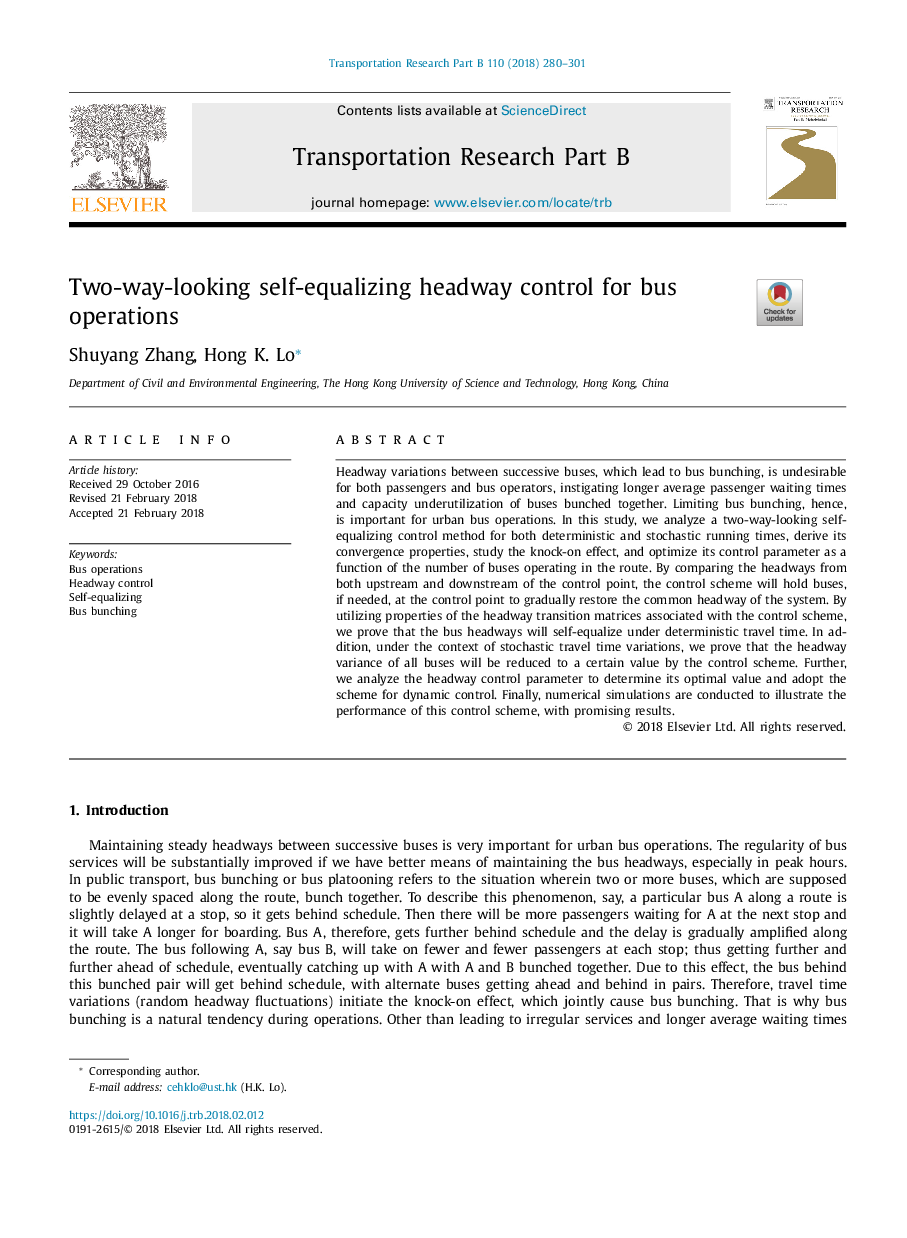| Article ID | Journal | Published Year | Pages | File Type |
|---|---|---|---|---|
| 7539133 | Transportation Research Part B: Methodological | 2018 | 22 Pages |
Abstract
Headway variations between successive buses, which lead to bus bunching, is undesirable for both passengers and bus operators, instigating longer average passenger waiting times and capacity underutilization of buses bunched together. Limiting bus bunching, hence, is important for urban bus operations. In this study, we analyze a two-way-looking self-equalizing control method for both deterministic and stochastic running times, derive its convergence properties, study the knock-on effect, and optimize its control parameter as a function of the number of buses operating in the route. By comparing the headways from both upstream and downstream of the control point, the control scheme will hold buses, if needed, at the control point to gradually restore the common headway of the system. By utilizing properties of the headway transition matrices associated with the control scheme, we prove that the bus headways will self-equalize under deterministic travel time. In addition, under the context of stochastic travel time variations, we prove that the headway variance of all buses will be reduced to a certain value by the control scheme. Further, we analyze the headway control parameter to determine its optimal value and adopt the scheme for dynamic control. Finally, numerical simulations are conducted to illustrate the performance of this control scheme, with promising results.
Related Topics
Social Sciences and Humanities
Decision Sciences
Management Science and Operations Research
Authors
Shuyang Zhang, Hong K. Lo,
